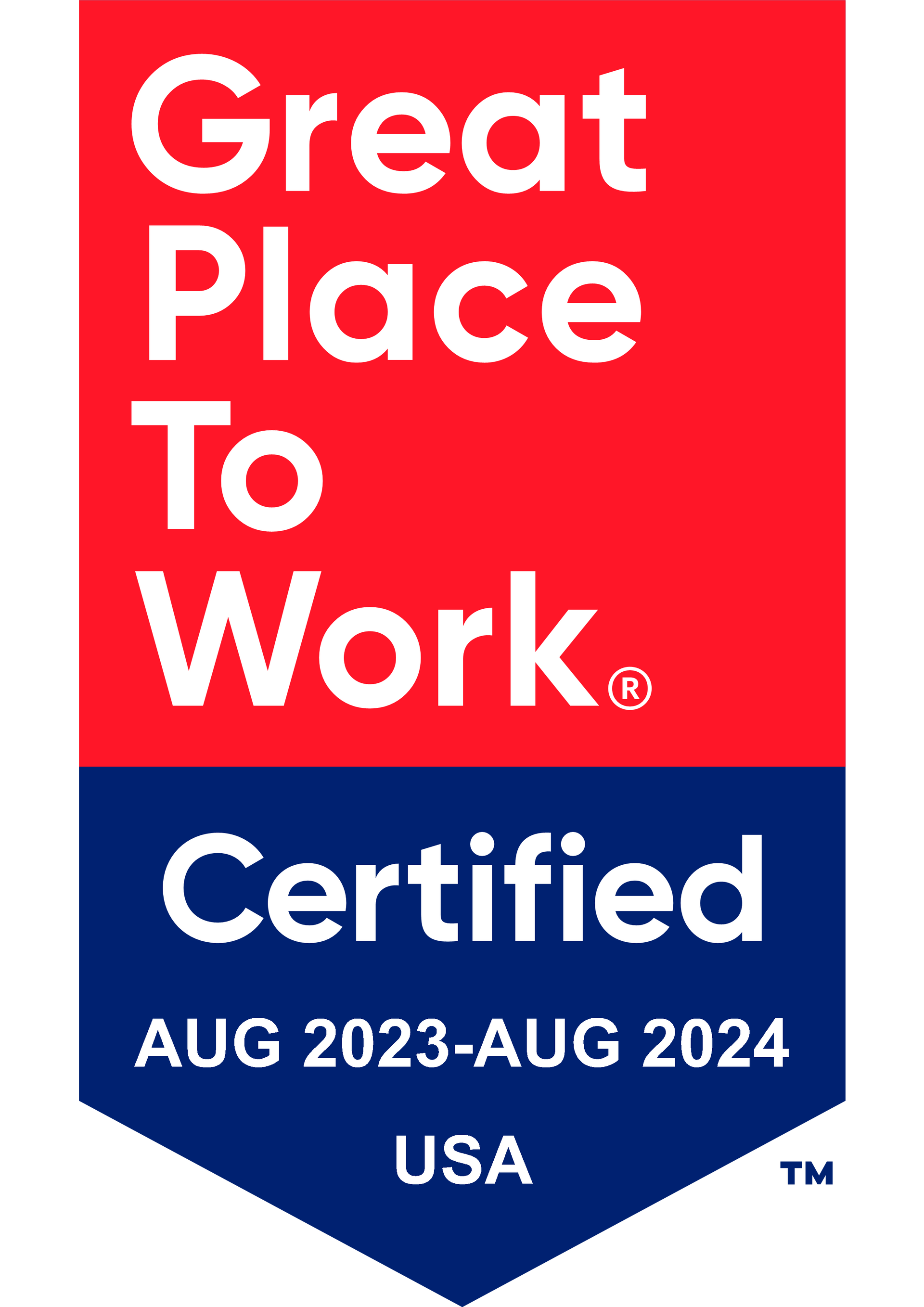Get in touch
408-366-8880
mymail@mailservice.com

Types of Retirement Plans - Is a Roth IRA or 401K better?
Financial wellness matters to employees. Unfortunately, however, a large portion of the workforce is not financially healthy. From an overload of debt to living paycheck to paycheck, individuals often struggle to maintain financial balance and make ends meet. When employees stress about finances, that stress doesn’t check itself at the office door when the employee arrives at work. Financial stress impacts an employee’s ability to do her job, which can lower productivity and eventually affect the bottom line.
Financial stress can harm mental and physical health. In the American Psychological Association’s 2019 Stress in America survey, 60% of respondents reported money as a significant stressor, which has been recorded at a similar level for the past few years. In a Bank of America Merrill Lynch report, 40% of employees said they spent three or more hours dealing with personal finances weekly, and 56% of employees revealed that they experience financial stress. Money management and financial stress are also cited as top reasons why many married couples file for divorce. These stats partly indicate why so many employees seek out employers that have a well-rounded benefits package with some type of retirement savings plan.
Retirement savings don’t just matter to those nearing retirement, either. Retirement savings plans are important to all generations that make up our workforce today. The 19th Annual TransAmerica Center for Retirement Study report showed that 21% of millennials are engaged in the topic of retirement savings. Additionally, 77% of Gen X workers and 78% of Baby Boomers participate in a company-sponsored 401(k) or similar plan. In the LaSalle Network What the Class of 2019 Wants report, the Gen Z population ranked 401(k) benefits with a company match as a top-five employer benefit. In a National Association of Colleges and Employers (NACE) Class of 2017 Student Survey, close to 68% of students thought a 401(k) with a company match was important. Further, in a 2018 American Institute of CPAs survey of 547 recent college grads and college seniors, 36% ranked 401(k) with a company match as a top-three workplace benefit.
Though a 401(k) is the most common retirement savings plan for employees, when a 401(k) isn’t the best option for an organization to offer, there are other types of retirement plans to consider.
TYPES OF RETIREMENT PLANS: THE 6 MAIN TYPES
There are six main types of retirement savings plans. Each plan varies in contribution limits, withdrawal penalties, pre-tax and after-tax functionality, eligibility requirements, and company match possibilities. The six retirement plans include:
- 401(k)s
- IRAs
- Roth IRAs
- SIMPLE IRAs
- SEP IRAs
- Roth 401(k)s
401(K) RETIREMENT PLANS
A 401(k) is what most employees think of when they think of modern employment retirement plans. Commonly referred to as a defined contribution plan, a 401(k) is a retirement plan offered by employers that allow employees to contribute pre-tax dollars to tax-deferred investments, reducing an employee’s taxable income. For example, if an employee makes $50,000 and contributes $4,000 to their 401(k), it reduces their taxable income to $46,000.
Some employers opt to offer a company match to employee contributions up to a certain amount. A couple of standard practices is to match 50 cents on the dollar up to 6% of the employee’s contribution or match dollar for dollar up to 6% of the employee’s contribution. Often, employers opt to develop the program so that the employer’s match vests at some point after employment commences, either all at once or at a graduated pace. If an employee leaves the organization before vesting in the employer match, they lose the employer match. When employees don’t take advantage of the company match, it’s tantamount to leaving free money on the table.
Employers sometimes contribute a discretionary amount per year into the employee’s 401(k), regardless of the employee’s level of participation in the plan. Often, these contributions are based on the company’s performance and vary in amounts from year to year.
The maximum 401(k) contribution for 2020 is $19,500. Investment gains are tax-deferred in a 401(k) until the money is withdrawn in retirement. If funds are withdrawn before the age of 59 ½, the money is subject to state and federal income tax, and a 10% early withdrawal penalty might be administered. Investment choices for 401(k)s are limited to what the plan administrator offers. Management and administrative fees charged to plan participants and employers can be relatively high for 401(k) plans.
A 403(b) is similar to a 401(k) but offered by nonprofits, hospitals, public schools, educational institutions, and churches. A 457(b) is identical to a 401(k) and 403(b) but offered only to government employees.
INDIVIDUAL RETIREMENT ACCOUNTS (IRAS)
An Individual Retirement Account (IRA) is a choice one might consider if they’ve maxed out their employer’s 401(k) plan or if their employer doesn’t offer a typical 401(k). IRAs can be used to invest in bonds, mutual funds, stocks, EFTs, and other investment types once the money is placed into it. It is a tax-favored investment account for which the individual makes investment decisions unless someone is hired to do it for them.
Similar to a 401(k), if one withdraws money from their IRA before the age of 59 ½, a tax penalty fee of 10% will likely be administered. Federal and state income taxes are also held on the early withdrawal. For individuals who do not also have a 401(k), they can deduct IRA contributions on their income tax returns, which is a way to reduce their annual taxable income. Income tax is paid on contributions and gains when money is taken out during retirement. If one opts not to start taking withdrawals at retirement, they will be required to begin taking withdrawals at the age of 70 ½.
In 2020, one can contribute up to $6,000 into an IRA if under the age of 50. An additional $1,000 can be invested by those who are 50 or older. Taxes are not paid on investment gains in an IRA, allowing them to grow faster than if they were taxed.
ROTH IRAS
A Roth IRA is different from a traditional IRA in that contributions are made on an after-tax basis. Once contributions are made, any money generated in the Roth IRA is not taxed again. Another difference is that withdraws can be made to a Roth IRA before retirement age without penalty, as long as five years have passed since the initial contribution. Individuals are not required to begin taking withdrawals from the Roth at the age of 70 ½, unlike 401(k)s and traditional IRAs.
The 2020 annual invest limit for a Roth IRA is similar to a traditional IRA, which is $6,000. However, you can invest in both a Roth IRA and traditional IRA, as long as the combined amount of contributions between the two is no more than $6,000.
SAVINGS INCENTIVE MATCH FOR EMPLOYEES (SIMPLE) IRA
Small businesses with up to 100 employees can offer the Savings Incentive Match for Employees (SIMPLE) IRA retirement plan. A SIMPLE IRA is similar to a 401(k): Pre-tax contributions are made from paycheck withdrawals, and they grow tax-deferred until retirement.
Unlike a 401(k), you can’t borrow from a SIMPLE IRA. Another difference between the two is the significant penalty paid for early withdrawal before the age of 59 ½, which is 25% compared to 10% for early withdrawal from a 410(k). A 25% penalty is administered if money is withdrawn within two years of opening the plan, as well.
SIMPLIFIED EMPLOYEE PENSION (SEP) IRA
A Simplified Employee Pension (SEP) IRA is a retirement option for those who are self-employed without employees. An SEP IRA retirement plan allows an individual to contribute a portion of their income to the plan. The contributions can be fully deducted from one’s taxable income.
For 2020, the maximum contribution to an SEP IRA is up to 25% of your annual salary, with a maximum contribution limit of $57,000. Based on the past few years, the trend is for the limit to increase by $1,000 each year.
ROTH 401(K)
A Roth 401(k) is a retirement account offered through employers. As the name implies, it combines features of a 401(k) and Roth IRA. Like a Roth IRA, contributions are made from after-tax paycheck dollars rather than pre-tax pay. If one remains in the plan for five years, contributions and earning are never taxed again. Withdrawals are not taxed for qualified distributions. A qualified distribution, which requires the account holder to have had the account for at least five years, includes withdrawals for a disability, once the account holder to be 59 ½, or after the death of an account owner. Once an individual reaches 70 ½, distributions are required from the account unless the employee is still employed for the company that holds the 401(k) Roth account.
Is a Roth IRA or 401K better? A difference between the Roth 401(k) and a traditional 401(k) and Roth IRA is the contribution limits that are set if one’s modified adjusted gross income (AGI) reaches a specific point. The contribution limit for a Roth 401(k) for 2020 is $19,500. Catch-up contributions of up to $6,500 can be made by individuals who are age 50 or older. However, for single filers, if one’s modified AGI reaches $139,000, they cannot contribute to a Roth 401(k). For those filing jointly, contributions cannot be made if their modified AGI reaches $203,000.
A Roth 401(k) is most beneficial to individuals in low-income tax brackets who believe that they will be in a higher tax bracket in the future. This is because contributions are taxed at a lower tax rate now, and distributions are made tax-free later when individuals are in a higher tax bracket.
ADDITIONAL FINANCIAL SECURITY BENEFITS
A retirement savings plan is a significant benefit to include as part of an organization’s benefits platform. However, other financial benefits are also important to employees. This is especially for the Gen Y and Gen Z populations, who seek employers that offer benefits which support not only long-term financial security, but short-term financial security, as well.
In addition to a retirement plan, many employers opt to offer financial wellness benefits to support employees in gaining and maintaining financial security. Examples of these benefits include:
- Money management and financial education
- Student loan support
- Tuition reimbursement
MONEY MANAGEMENT AND FINANCIAL EDUCATION
Financial wellness programs offer employees more than just retirement plan counseling. Financial wellness programs can offer webinars, seminars, and classes that train employees on a variety of money matters. As previously shared on our blog, education on budgeting, creating a will or trust, saving for college, making your money go further, home buying, getting out of debt, and starting a savings account are all financial topics that an organization might consider offering to its workforce. Personal money coaches can provide support for employees to achieve financial success and peace, as well.
STUDENT LOAN SUPPORT
Student loan debt support is a relatively new benefit that employers are offering to meet the needs and requests of a demographically diverse workforce. As we previously shared, Bankrate reported that 31% of Americans have or have had student loan debt. Also, many respondents reported that, due to their student loan debt, they put off financial milestones, such as buying a home, saving for the future, and paying down other debt.
To support employees with student loan debt, employers are offering some variation of student loan debt support. Some employers offer student loan refinancing programs. Others offer employer programs that match 401(k) contributions with student loan repayments or allow workers to transfer PTO time to pay down student debt.
TUITION REIMBURSEMENT
Tuition reimbursement supports employees financially when they want to go back to school for a new degree or to complete a degree. Typically, employers will approve to reimburse coursework up to the IRS limit if the coursework aligns with the individual’s job or career path. Many organizations incorporate a claw-back clause in their tuition reimbursement policy where the employee has to pay the company back if they leave the company within a certain point of time after receiving the reimbursement.
WHICH TYPES OF RETIREMENT SAVINGS PLANS ARE RIGHT FOR YOUR ORGANIZATION?
Financial well-being is vital to all demographics. Financially healthy employees are generally more productive and focused at work. Offering a retirement savings plan as part of your employer benefits package also helps attract and retain top talent.
There are several retirement savings plan options to consider for your organization. As your professional benefits brokerage firm, KBI Benefits will support you in assessing the retirement savings plan options available to you and help you develop a program to meet the needs of your workforce. We will also provide guidance and support in implementing a holistic financial wellness program for your employees that goes beyond traditional retirement savings plans for short- and long-term financial security.
Services
Latest Thinking




